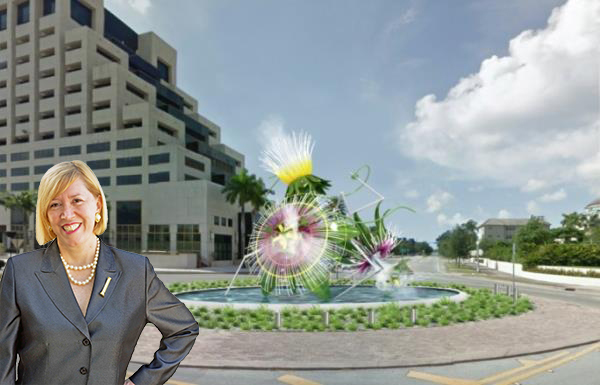Trending
Controversial Coral Gables sculpture here to stay

A $1.2 million bunch of blooming flowers in Coral Gables got a reprieve from the city commission.
Coral Gables commissioners voted on Tuesday not to put the sculpture’s future to a public vote, killing a resolution that Coral Gables Mayor Jim Cason called “the death of art in public places.”
Commissioner Jeanette Slesnick sponsored the resolution that would have called for residents to vote on the flower sculpture on the Segovia traffic circles in downtown Coral Gables. Slesnick’s motion failed to get any traction following discussion of the item, and opponents of the sculpture failed to get the number of signatures to effect a change.
Since the commission approved the piece of art and its installation more than a year ago, residents have voiced their opposition to the sculpture. Slesnick said she received emails from residents who weren’t aware of the artwork until it had already been installed. Commissioner Vince Lago said Coral Gables is “by far the most transparent city” and that there had been up to 31 public meetings where the sculpture was discussed, adding that the commissioners “cannot perpetuate falsehoods.”
The artwork, part of the city’s Art in Public Places program, cost about $1.1 million plus $100,000 to install, Slesnick said. Alice Aycock designed the sculpture. Other municipalities have enacted similar programs, including Doral and Miami Beach, and the city of Miami is in the midst of finalizing its Art in Public Places program.
At Tuesday’s meeting, Cason and others said a vote would be costly, and countered the claim that the sculpture’s appearance caused accidents and created traffic issues. “Beauty is in the eye of the beholder,” Cason said.
Emails sent to the commission last year criticizing the installation described it as “Cheap-looking, inappropriate, and ugly,” a “monstrosity” and “an alien invader,” according to the Miami New Times.
“Think about what George Merrick did. He put in those villages, including a Chinese village, in the 1920s when we did not allow Chinese immigrants in the U.S.,” he added, calling the Merrick forward-thinking and the artwork “whimsical and different.”




